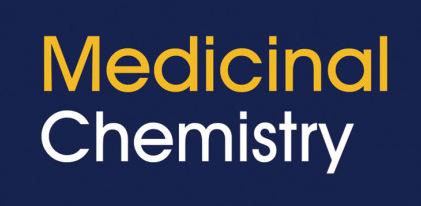
Background: Benzazepines received great attention in the field of medicinal chemistry since this scaffold has been recognized to belong to the important family of privileged templates. More specifically, the 4-amino-1,2,4,5-tetrahydro-2-benzazepin-3-one (Aba) is used as a core structure in a variety of constrained therapeutic peptide (turn) mimetics.Most of the synthetic approaches towards this template have focused on cyclizations which form the central 7-membered azepine ring.
Objective: Previous investigations in our group allowed an expansion of the substitution patterns in the 4-amino-benzazepin-3-one scaffold by introduction of methyl substituents at positions 4 and 5 of the azepinone ring system, but also to 1-aryl substituted compounds. These were the only trisubstituted analogues obtained to date. To introduce an additional point of diversification and conformational constraint useful for peptide mimicry, one can use bifunctional substrates in the Ugi reaction as reported in the present manuscript.
Method: The 1-carboxamido-substituted Aba scaffold has been synthesized via the Ugi-3CR reaction starting from N-Phth-protected 2-formyl-L-Phe-OH with a set of amine and isocyanide derivatives. The most suited reaction conditions were applied, involving preformation of the imine in MeOH (0.1 M) in the presence of anhydrous Na2SO4 during 2 hours at room temperature, followed by the addition of an equimolar quantity of isocyanide prior to heating the reaction mixture at 80 °C for 20 hours, using sealed vial reaction conditions.
Results: The substituted Aba scaffolds were isolated in moderate yields (and diastereomeric ratio). This is due to the requirement for a double N-phthaloyl protection of the bifunctional building block, which prevents the use of an excess of amine reagent to drive the reaction conversion to completion, and some starting substrate always remains. Despite the moderate yields, the methodology is efficient since it only requires a limited number of synthetic steps in a final one-pot reaction. In most cases, the diastereomers could be separated by preparative RP-HPLC or via silica gel column chromatography. This is interesting from a medicinal chemistry point of view, since access is provided to the individual diastereomers.
Conclusion: We have developed an efficient and useful one-pot strategy to access 1-substituted 4- aminobenzazepinone (Aba) derivatives via the Ugi-3CR reaction. To the best of our knowledge, these scaffolds are only accessible through the presented methodology. The obtained structural complexity, as well as the substitution versatility of these trisubstituted scaffolds, will allow their use in various biological applications.
